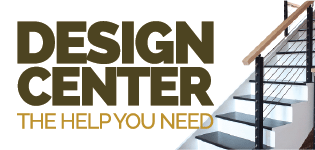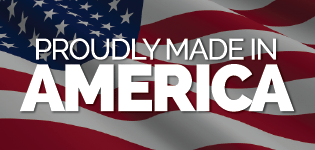Stair Parts Diagram & Terminology
Our stair part diagram lists the commonly used stair parts you’ll need for your stair design project. We’ve also listed each part below and link to where its listed on the site, so you can be sure to find the right stair part, quickly. StairSuppliesTM is a stair part manufacturer and specializes in top quality wood stair parts, and other stair supplies. If you need any assistance in determining which stair parts and or wood species are right for your project, please Contact us by submitting an inquiry, or click to call (866) 226-6536. We also offer a detailed stair part glossary for more information.

Stair Supplies Guide to Ordering Stair Parts |
|
| Follow the steps in this simple guide to complete the list of stair parts that you will need for your project. If you have a curved or complex stairway, then the same steps apply, but you will need to adapt measurements to accommodate your specific stairs. | |
Support System |
|
Skirtboard |
Order your skirtboard length by multiplying the number of treads by 13” and adding additional length for extension beyond the first and last riser. Skirtboard is needed for both sides of a stairway.Order 10 1/2” or 11 1/2” skirtboard based upon your preferences and size of stairway. |
Starting Step |
Order a starting step for volutes, turn outs and box newels (square is suggested for box newels). Order a single or double based upon your stair design. Bowed starting steps are great for a grand entrance. |
Treads |
Order your step pattern as a left hand, right hand or double. Count one tread per step. The measurement for the throat cut is from the inside the return to the other end of the tread or for a double return the measurement is from the inside of one return to the inside of the other return. |
Risers |
Order your length of riser as the same length as your treads. Risers are cut to length in the field. Count the number of steps. Don’t forget to add one for each flight of stairs for your total number of risers. |
Landing Tread |
Order the length for each piece of landing tread needed. Landing tread is used along balconies, at landings. Be sure to choose long enough lengths to include miter cuts. Box newels may require wider landing tread. |
Apron |
Order apron 3/4” x 5 1/4” for every piece of landing tread. The apron runs under the landing tread and finishes the look |
Cove |
Order cover molding for under every tread. If you have return treads add 1.5 feet for each return. Order cove to go under all landing tread. |
Balustrade |
|
Volute / Turnout / Starteasing |
Order a starting fitting that complements your home. A volute is the preferred choice for most homes |
Starting Newel |
Under the first fitting you will need either an iron newel or a pin top newel. Select a pin top newel that is either 42” or 48”. |
Middle Run Newel |
Order an iron newel or pin top newel in the middle of long handrail runs (longer than 8′) |
Utility Newel |
Newels are used at all changes of direction of handrail. Order 42” or 48” newels. Order 48” or longer newels as necessary at turns on landings of stairs. |
Level Run Newels |
Order a pin top 42” or 48” newel when handrail runs are longer than 8′ on balconies. Use with a tandem cap |
Half Newels/Rosettes |
When a handrail ends into a wall order a newel that is split |
Iron Balusters |
Order your pattern for iron balusters and select 3 iron balusters per foot. Order 3 iron balusters per tread. Order shoes to match the size of your iron balusters. Select one shoe for the bottom of every baluster. If desired, order a shoe for the top of each baluster. Order angle shoes for kneewall installation or for handrail that is going up steps. |
Wood Balusters |
Order 3 wood balusters per foot. Order 3 wood balusters per tread. Most balusters are long and designed to be cut to fit. Look at the specific dimensions for each wood baluster to know the length you should order. |
Handrail |
Order one section of handrail for each flight of stairs and for balcony sections. Count the number of steps and multiple by 13” and add any extra needed. Handrail comes in lengths of even feet. Order plowed handrail if you have wood balusters with a square top. Order the correct plow to match your balusters |
Wall Rail |
Wall rail is used in closed stairways such as to a basement. Wall rail is often used where codes require on stairs wider that 4′ on the side opposite of the handrail. |
Wall Rail Fittings |
Order a level quarter turn to turn the handrail back to the wall on each end of a wall rail. Most build codes require handrail to be returned to the wall. |
Handrail fittings |
Order the appropriate handrail fittings for each of the transitions. Every newel should have a fitting. Each half newel should have an opening cap that is cut in the field. A gooseneck is needed for transitions from steps to balconies. A level quarter with cap for turns. |
Shoerail |
Order Shoe rail to cover knee wall or on landing tread if desired. |
Hardware |
|
Sure-Tite |
Order 1 Sure-Tite for every newel. A Sure Tite is the best way to secure a newel to the frame of the house |
Dowel Screws |
Order 1 dowel screw for every wood baluster for a strong and tight installation |
Dowel Driver |
Order 1 or 2 dowel drivers for installing dowel screws into balusters |
Rail Bolt Kit |
Order a rail bolt kit for any extra connections or splices in handrail. A rail bolt kit is supplied with fittings. |
Handrail Brackets |
Order handrail brackets for attaching wall rail to the wall. Use 2 handrail brackets for runs up to 6′. For wall rail runs from 6′ to 12′ use 3 handrail brackets. For wall rail runs over 12′ use 4 handrail brackets |
Epoxy |
Order 1 tube of epoxy for every iron newel and 1 tube of epoxy for every 20-25 balusters. If it is your first installation, order an extra tube of epoxy. |
Epoxy Gun |
Order 1 epoxy gun for your installation. The epoxy system is self mixing and the epoxy gun is the only way to push the epoxy through the tube and mixers. |



